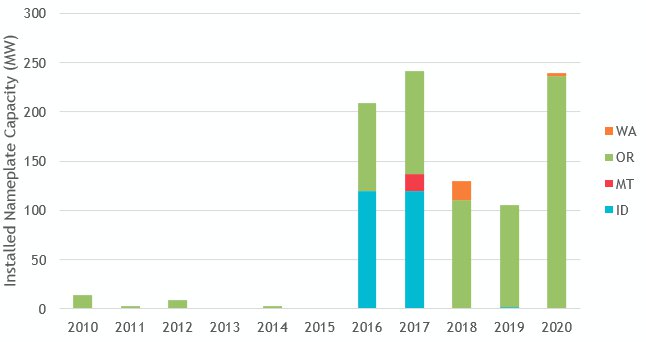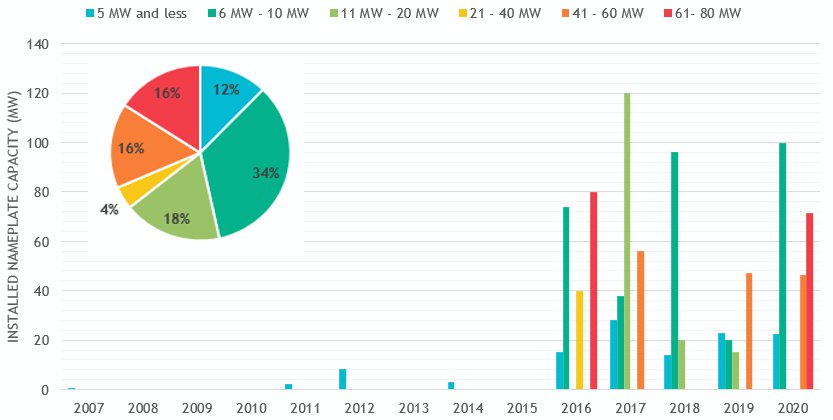Solar
Installation of solar photovoltaics (PV) in the region has been modest so far. However, the development pipeline is brimming with proposed projects and solar PV looks to play a pivotal role in the transformation of the energy system over the next few decades. As the cost of solar has decreased significantly, solar has become the lowest-cost new generating resource option in the region.
The initial wave of solar development was primarily PURPA qualifying facilities, typically (though not always, depending on state rules) small projects 20 MW or less in size. Since the cost of solar PV dropped so dramatically over the past decade, solar is now being developed to meet a variety of needs including utility and corporate renewable and clean energy policies and goals, as well as a replacement resource for retiring coal units. There are now about 950 megawatts solar capacity operating across the four northwest states, plus an additional ~160 megawatts of solar in Utah serving PacifiCorp that is included in the region’s existing resource system. The majority of Pacific Northwest solar PV capacity is located in Oregon (70%), followed by 25% in Idaho.
Installed Solar PV Capacity, by PNW State

At the time the Seventh Power Plan was adopted in February 2016, the largest solar plant operating in the region was 5 megawatts. About 34% of the installed capacity today comes from projects between 6 and 10 megawatts, followed by 18% from projects between 11 and 20 megawatts. Today, the largest project is 80 megawatts, with even larger projects proposed for development.
PNW Solar Development by Project Size (955 MW total installed capacity)

Behind-the-Meter Solar PV
Behind-the-meter (otherwise known as distributed) solar PV, often constructed on residential and commercial rooftops with energy consumed directly by the end-user, has seen significant growth in the region – nearly tripling in installations over the last five years. By the end of 2018, 326 megawatts of behind-the-meter solar capacity was installed and operating in the Pacific Northwest, with about 90% located in Oregon and Washington. State and utility incentives have contributed to the increasing presence of distributed PV, along with social and economic drivers. Utilities with limited transmission capacity or significant transmission congestion are looking to integrate large swathes of distributed resources into their resource portfolio to meet future energy and capacity needs (for example, Puget Sound Energy’s 2021 Integrated Resource Plan identifies a significant amount of behind-the-meter solar and storage to help mitigate transmission constraints and provide a local resource for the utility).



